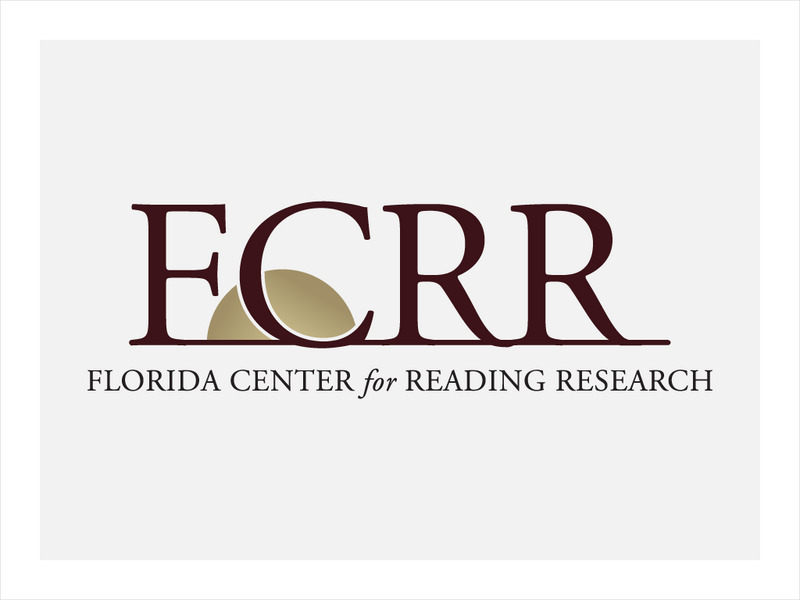Scholastic
Scholastic Teacher Resources: Character Makes a Comeback
Describes three examples of programs that effectively teach responsibility. Discusses how responsibility can be developed.
Quizlet
Quizlet: Story Elements (1St Grade): Test
Students will be asked 10 questions about story elements on this test. Six multiple choice and five true/false questions appear on this assessment. A printable version of this assessment is also available. Picture cures are provided next...
Quizlet
Quizlet: Story Elements (1St Grade): Flashcards
These interactive flashcards provide definitions for different story elements. Engaging picture cues are provided for each flashcard, and students can play the audio to hear the words and definitions read aloud.
Better Lesson
Better Lesson: Character Web
For this lesson, learners will create a character web. Students will use a character from their storybook character for the web.
Read Works
Read Works: Lesson 2: Good and Evil Characters
This instructional activity will allow students to understand why Fairy Tales have good and evil characters and identify good and evil characters in a Fairy Tale.
Better Lesson
Better Lesson: rl.k.3 With Prompting and Support, Identify Characters, Settings,
This landing page provides different lesson plan choices on teaching RL.K.3 With prompting and support, identify characters, settings,
Other
Writing world.com: Writing Dialogue for Children
A good site for teachers and writers looking to write for children, or teach children how to write dialogue. Includes tips and guidelines.
ReadWriteThink
Read Write Think: Become a Character
In this online lesson and activity, students actually "become" a character from a novel in their analysis of characterization. The lesson uses the Scarlet Letter, but any novel can be used. RL.9-10.3 Analyzing Characters, RL.11-12.3 Auth...
Other
Writing World: Four Ways to Bring Settings to Life
A great resource outlining four major ways to make settings appear more real and genuine in fiction. Deals with themes such as motion, experience, mood, and the senses. W.11-12.3d Sensory/precise lang narratives
Texas Education Agency
Texas Gateway: Characters and Staging in Drama
[Accessible by TX Educators. Free Registration/Login Required] In this lesson, you will analyze how different playwrights characterize, or develop, their protagonists and antagonists through the dialogue and staging of their plays.
Texas Education Agency
Texas Gateway: Analyze the Central Characters in Literary Text/fiction
In this lesson, you will discover some ways that writers reveal the complexity of their characters. By closely analyzing one author's characters, you'll come to see how their words, actions, and interactions with one another can shape a...
Common Sense Media
Common Sense Media: Character Development and Relationships in Hamlet
A lesson plan relating to Hamlet whose objective is to able to "analyze how and why individuals, events, and ideas develop and interact over the course of a text". Lesson includes a hook, direct instruction, guided practice, and...
PBS
Pbs: American Masters: Lesson 2: Truman Capote: Other Voices, Other Rooms
This lesson plan is based on the PBS episode of American Masters about Truman Capote. Young scholars will read and analyze how Truman Capote develops characters as they record their findings on worksheets included with this lesson. Then...
Other
Fiction Factor: The Importance of Setting
An interesting article concerning the importance of setting to any piece of fiction. Gives good information about how setting affects characters and "world-building."
Florida Center for Reading Research
Florida Center for Reading Research: Narrative Text Structure: Character Compare [Pdf]
A lesson plan in which students read a narrative text and complete a graphic organizer to compare two characters. Materials are included.
Florida Center for Reading Research
Florida Center for Reading Research: Narr. Text Structure: Picture the Character
A lesson plan in which students read a narrative text and complete a graphic organizer to illustrate and write characteristics of one of the characters. Materials are included.
Florida Center for Reading Research
Florida Center for Reading Research: Compare a Character [Pdf]
A lesson plan in which students read a narrative text and complete graphic organizers to compare and contrast two characters from the story. Materials are included.[PDF]
Florida Center for Reading Research
Florida Center for Reading Research: Character Consideration
A lesson plan in which young scholars read a narrative text and complete graphic organizers to analyze a character. Materials are included. [PDF]
Florida Center for Reading Research
Florida Center for Reading Research: Character Characteristics
A lesson plan in which students read a narrative text and complete graphic organizers to analyze a character. Materials are included. [PDF]
Read Works
Read Works: Grade 1: Three Lesson Unit: Character: Actions, Feelings, Looks
[Free Registration/Login Required] A series of three lesson plans, based on David Shannon's books No, David!, David Gets in Trouble, and David Goes to School. Young scholars learn how to utilize text and picture clues to determine and...
Other
Short Story Elements
Geared toward high school students, this site contains many notes and links on the aspects of short story, figurative language, and figures of speech.
HotChalk
Hot Chalk: Lesson Plans Page: The Nature of the Antagonist
This lesson plan teaches students to understand the differences between protagonists and antagonists, to recognize a "villain" in storytelling, and to understand conflict as used in literature.
Alabama Learning Exchange
Alex: Interpreting Shakespeare's a Midsummer Night's Dream
After a study of Shakespeare's A Midsummer Night's Dream, students working in small groups conduct research and create a slideshow presentation that emphasizes key aspects of the play and/or new ideas generated by the play.
Alabama Learning Exchange
Alex: Scrapbook Book Report
After reading independently a novel or biography, students in this creative writing activity demonstrate their understanding of characterization and point of view by creating the main character's personal scrapbook.




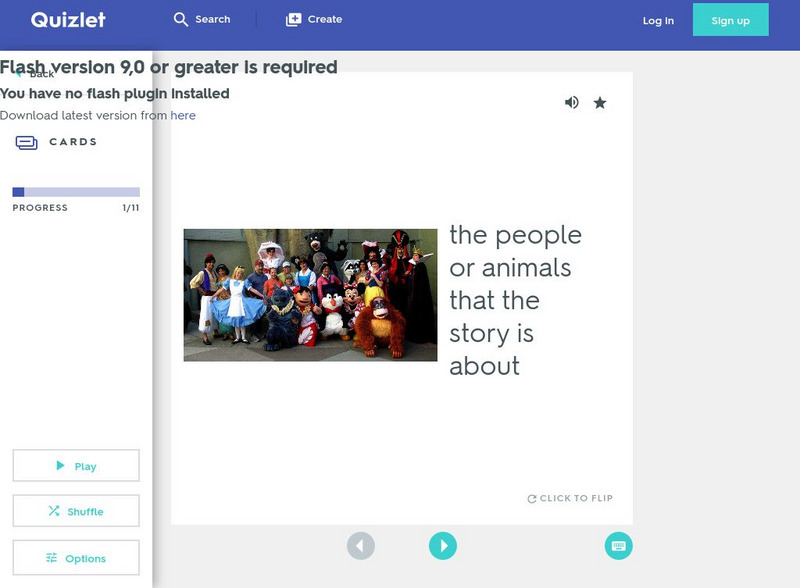
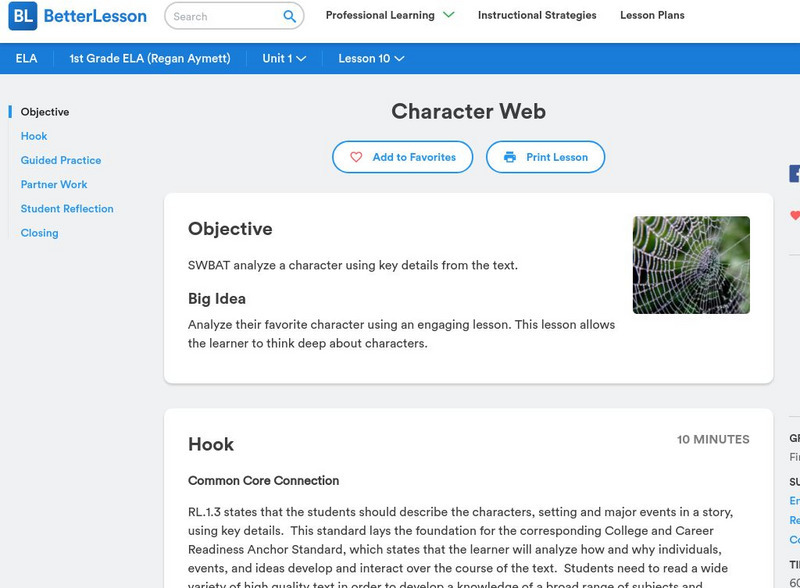
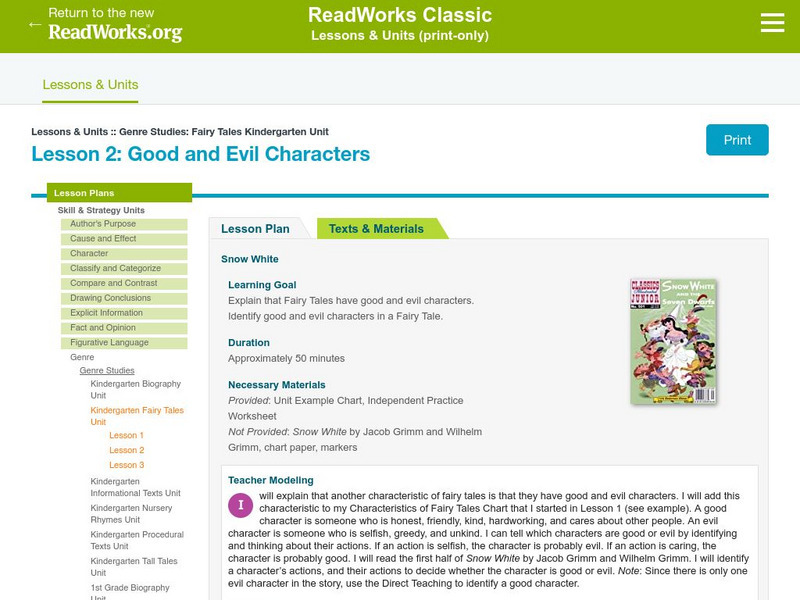

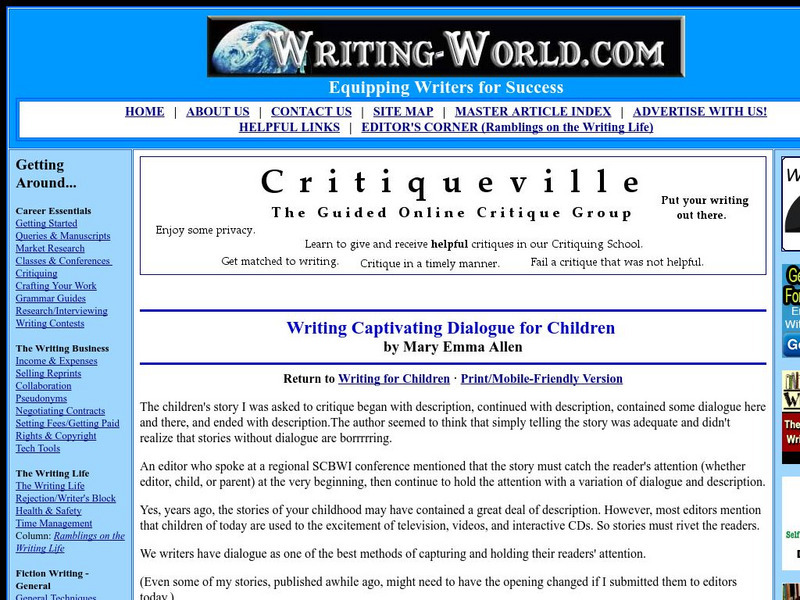
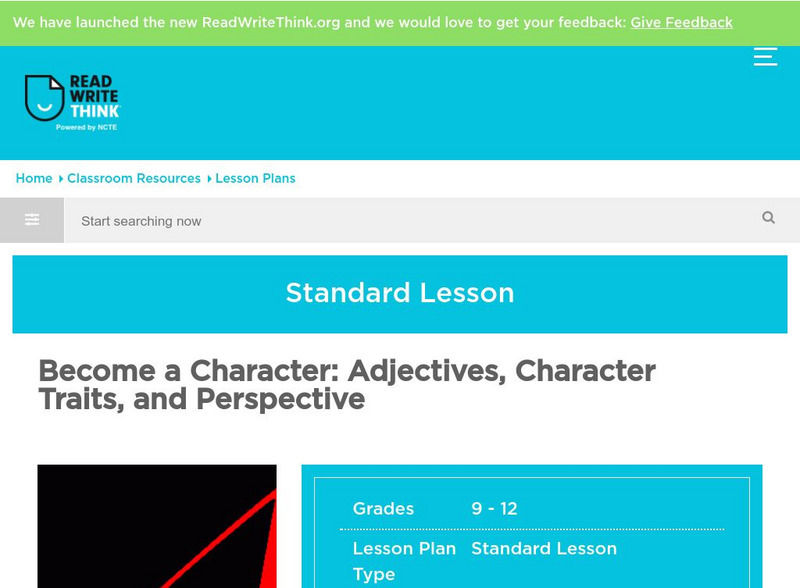
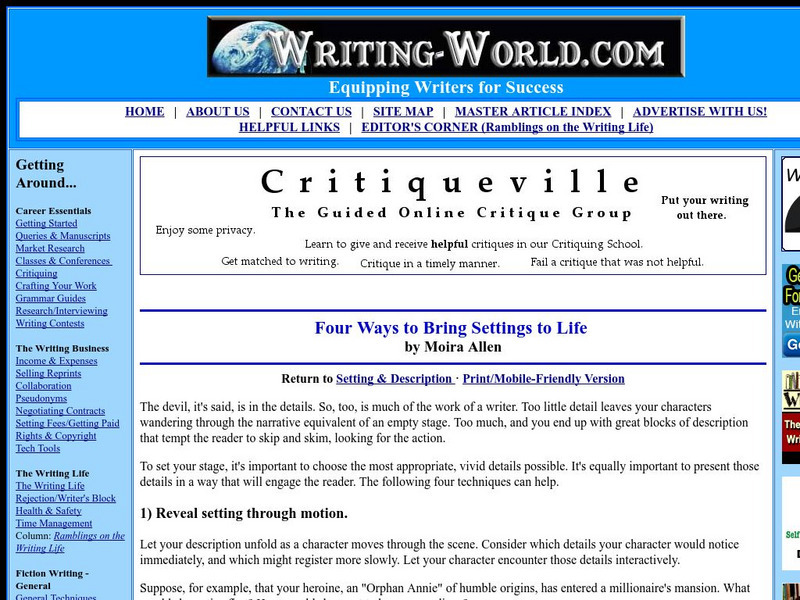



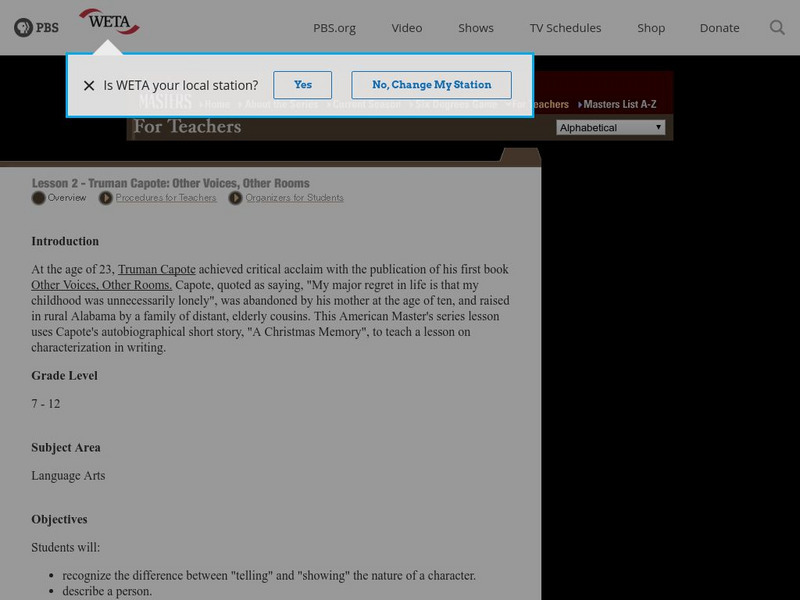
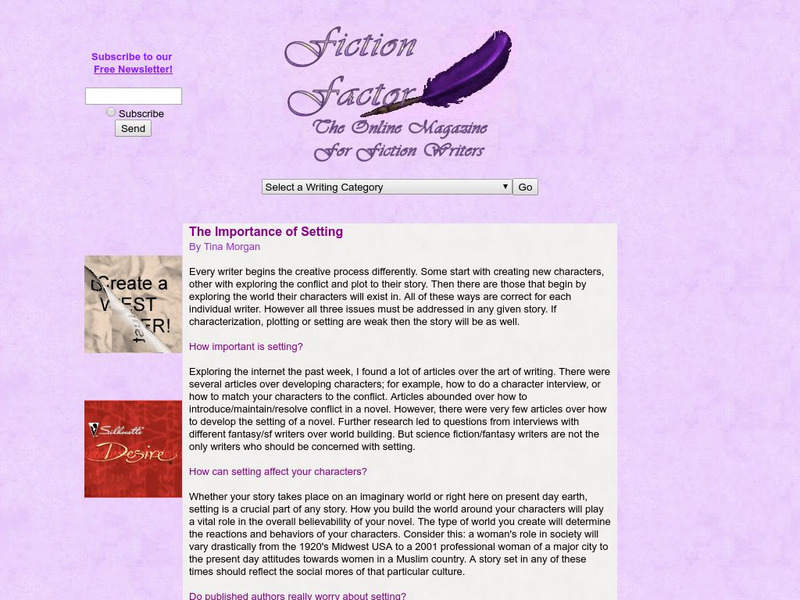
![Florida Center for Reading Research: Narrative Text Structure: Character Compare [Pdf] Lesson Plan Florida Center for Reading Research: Narrative Text Structure: Character Compare [Pdf] Lesson Plan](https://content.lessonplanet.com/knovation/original/509126-2e619d14c70158ecfdf45fb7ca9455f1.jpg?1661786933)
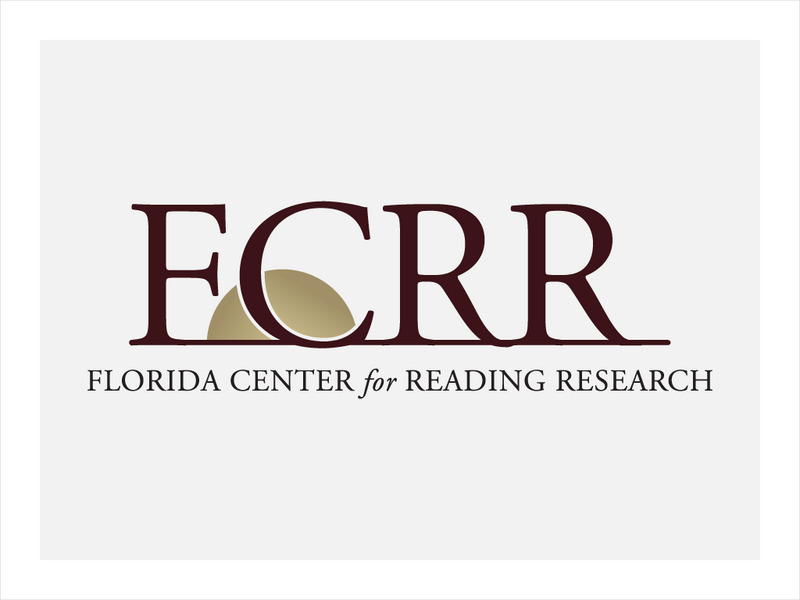
![Florida Center for Reading Research: Compare a Character [Pdf] Lesson Plan Florida Center for Reading Research: Compare a Character [Pdf] Lesson Plan](https://content.lessonplanet.com/knovation/original/509130-d13671fde24d0633b0181120a31112c3.jpg?1661786928)
